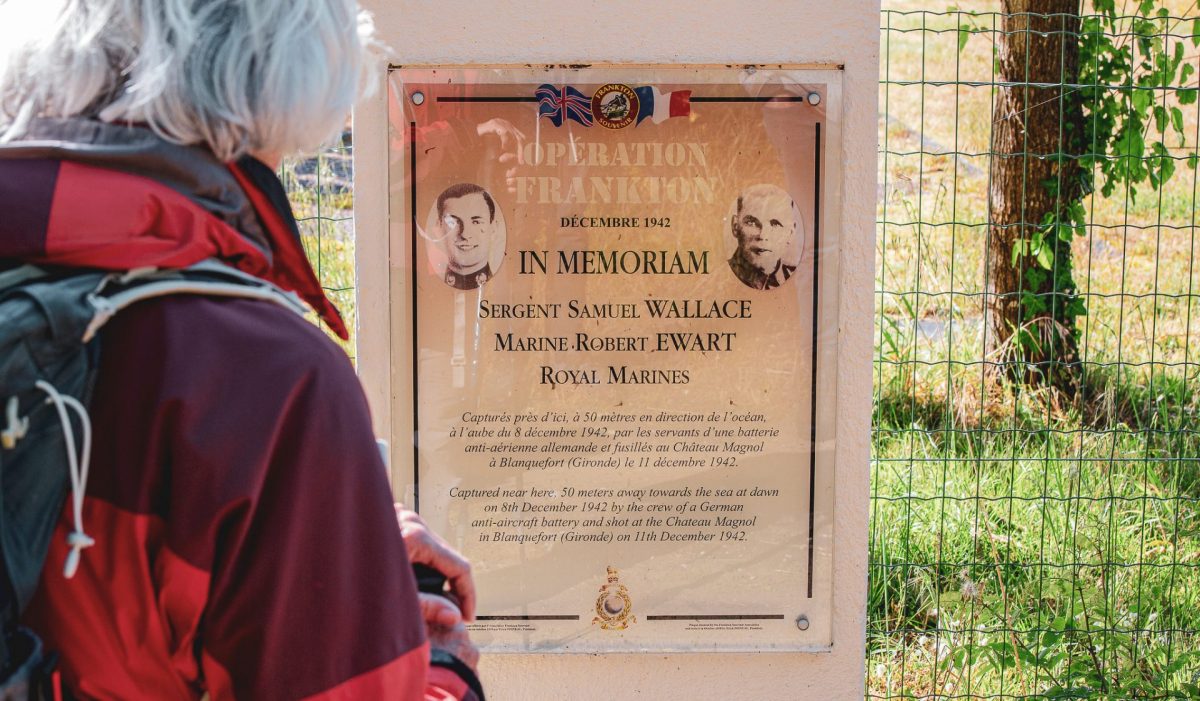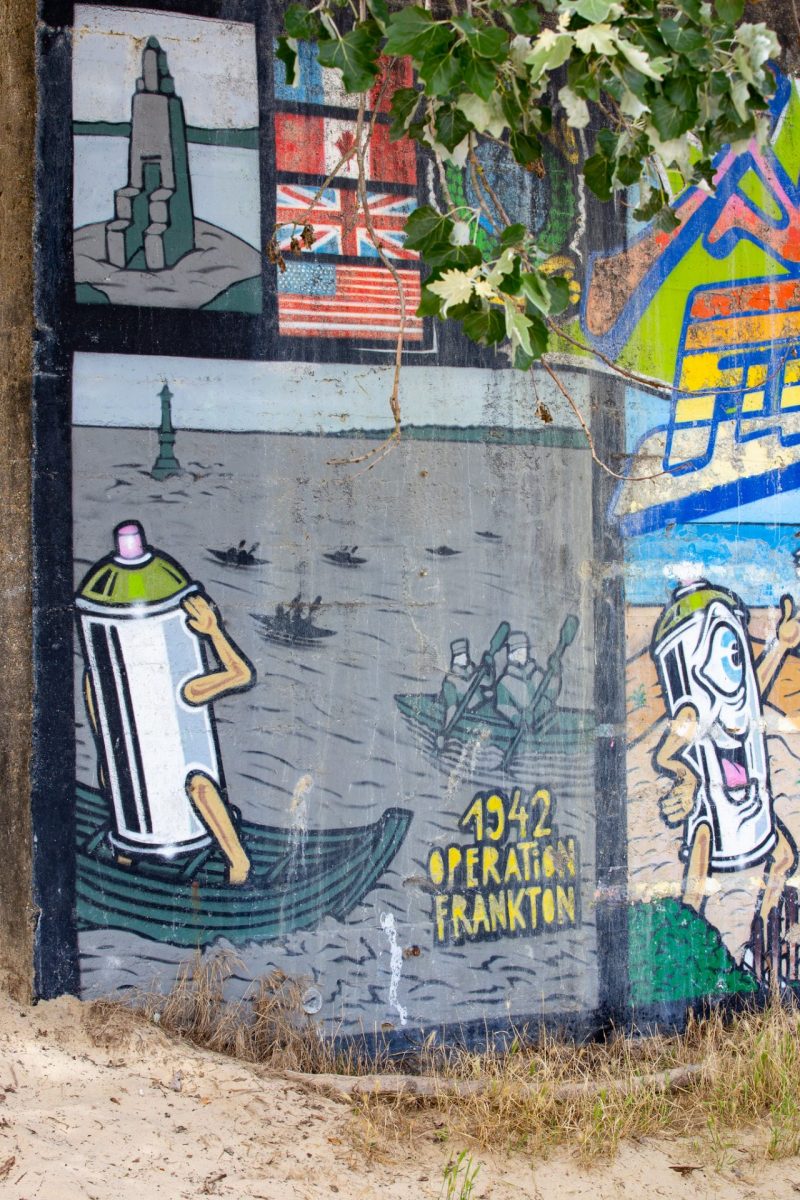The “Frankton” hiking route is based on a World War II military operation, carried out by 12 British Royal Marines on the Gironde estuary. This 140 km route crosses the departments of Gironde, Charente and Charente-Maritime. In Gironde, it is a 33 km memory lane, which will soon obtain the title of GR®.
Frankton, a route through history
The Frankton Memorial Trail is the starting point for the withdrawal of two pairs of surviving British soldiers who were trying to reach England after having successfully completed their mission to sabotage German ships in the port of Bordeaux.
Two others drowned, six were captured and shot.
Follow in the footsteps of these Royal Marines! History is beautiful and immortalized by this route which pays homage to the memory of these British soldiers who fought for the liberation of France under German occupation.
Many monuments recall the memory of these soldiers. They are found in Gironde on Pointe-de-Grave, in Montalivet-les-Bains, in Entre-deux-Mers, but also in Charente-Maritime in Saint-Georges-de-Didonne and Royan.

Frankton is told, and transmitted
Operation Frankton is a military operation carried out by twelve men from a small unit of British commandos, the Special Boat Service of the Royal Marines.
On December 7, 1942, six kayaks, with 12 soldiers in pairs, were launched by an English submarine 16 km from the mouth of the Gironde estuary. Their objective is to lay magnetic mines on the hulls of German ships docked in the port of Bordeaux, in order to explode and destroy them.
During this 5-day operation, the commandos will have to go up the estuary by kayak at night and hide during the day in the undergrowth on the banks so as not to draw attention to themselves.
One of the kayaks (Sperm whale) tore when launched and the two commandos assigned to it would remain on board the submersible and return to England.
The second kayak conger (conger) does not pass the eddies of the mouth, it capsizes while crossing the bar off Soulac, the soldiers drown. Corporal George Sheard's body was never found. That of marine David Moffatt was discovered on December 17, 1942 on a beach on the Île de Ré with the kayak.
The third boat Cuttlefish (cuttlefish) will reach the Bec d'Ambès, where the kayak, punctured, will sink. Unable to accomplish the mission, they retreat to Entre-deux-Mers and end up arrested in La Réole on December 28, 1942, then tortured and executed in March 1943 in Paris, with the pair who will be caught after the success of the mission.
Sergeant Wallace and Marine Ewart, aboard the Coalfish (coalfish), were taken prisoner near the Pointe de Grave lighthouse where they had arrived at dawn and were interrogated and then executed without having spoken to Blanquefort, near the Château de Dehez, which today serves as a place of commemoration.
The last two remaining kayaks slipped into the port of Bordeaux on December 11, 1942, around 21 p.m. the Catfish accomplished the mission of laying mines on three large German ships moored on the left bank of the port, while the Crayfish (crayfish) placed its explosives on two boats immobilized in Bassens.
At 7 a.m., the trapped boats were damaged by the explosions, and according to a report, French firefighters stationed in the port of Bordeaux deliberately participated in making the situation worse by flooding the ships with their lances to capsize them. The mission is a success.
Escaping and taking advantage of the falling tide, the two pairs on their kayaks descend the estuary to Saint-Genès-de-Blaye, sink their boats, separate into two groups and begin a 160 km journey on foot by occupied zone as far as Ruffec in Charente. One of the pairs is noticed and denounced in Montlieu-La-Garde. Corporal Albert Laver and Marine WN Mills will be tortured for 3 months, tried for terrorism and shot in March 1943 in Paris, with the binomial of Cuttlefish (cuttlefish), caught earlier at La Réole. Neither will they speak under torture.
Major HG "Blondie" Hasler and Corporal William Sparks of the Kayak Catfish, who made up the second duo, joined Gibraltar in April 1943, supported by the French Resistance and made it out alive.
Even if the mission is a success, they are the only survivors, two drowned and six were captured and shot.
The execution of these six Royal Marines taken in uniform constitutes a war crime for which German Admiral Raeder had to answer during the Nuremberg trial in 1946.

